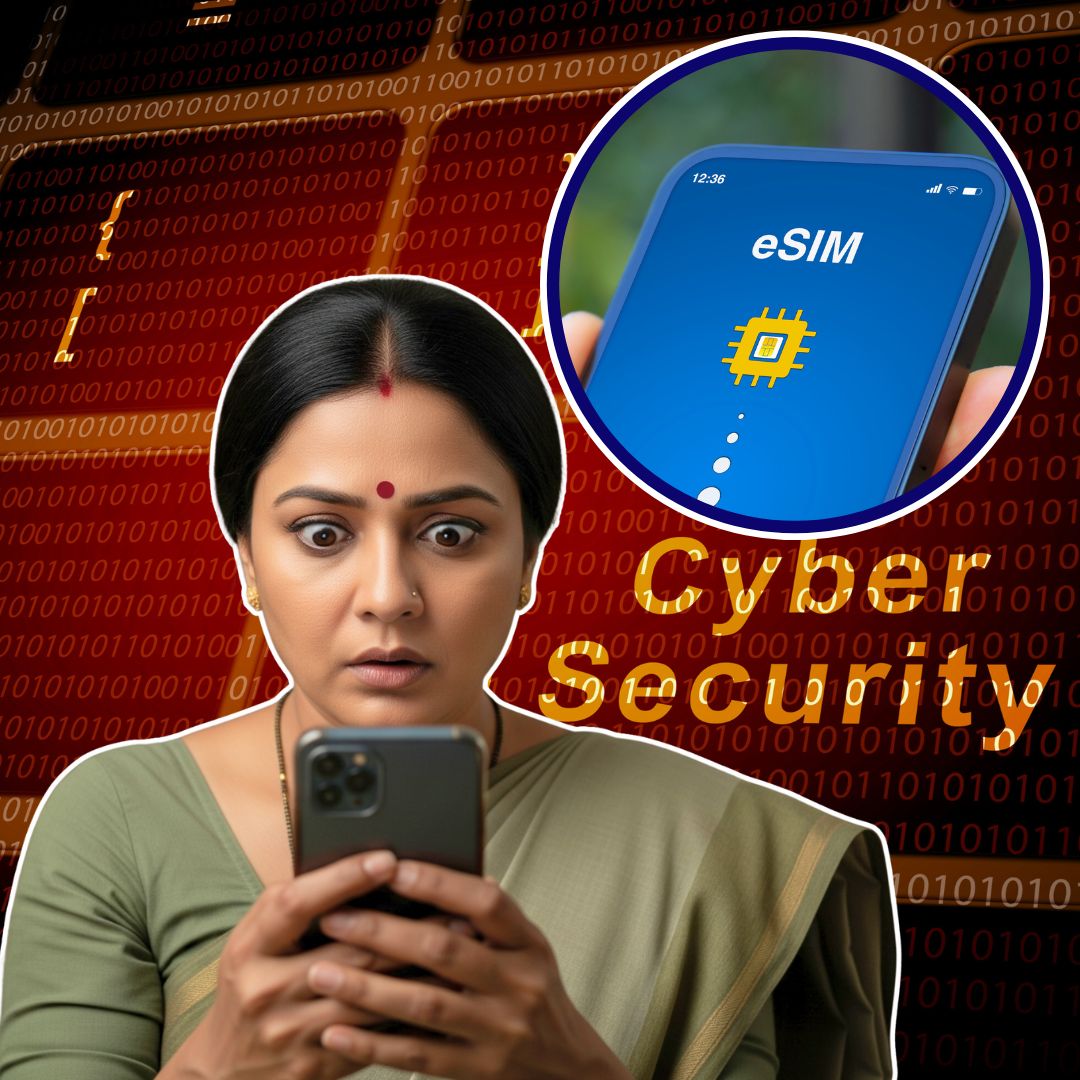A new eSIM scam is spreading rapidly in India, where cybercriminals hijack phone numbers via fake eSIM activation links, draining victims’ bank accounts in minutes without requiring OTPs or PINs.
The Indian Cybercrime Coordination Centre (I4C) has issued warnings advising users never to click unsolicited links and to immediately contact their telecom operator and bank if their phone loses network connectivity unexpectedly. Several cases have reported losses ranging from lakhs to crores, highlighting the urgent need for awareness and caution.
How the eSIM Scam Operates and Its Risks
Fraudsters impersonate telecom customer care agents, calling or messaging victims with fake links supposedly for eSIM activation or SIM upgrade. Once clicked, the victim’s physical SIM is deactivated, and the phone number is transferred to a criminal-controlled eSIM on another device.
This transition reroutes all calls, messages, and OTPs to the fraudster, allowing swift unauthorized transactions and account takeovers without needing any passwords. The scam’s rapid execution and stealth make it highly dangerous, often leaving victims unaware until substantial financial damage occurs.
Recent Cases and Official Alerts
Reports include a victim in Noida losing ₹27 lakh after scammers hijacked her number through an eSIM link, withdrawing money, breaking her fixed deposits, and taking loans fraudulently.
The Ministry of Home Affairs’ I4C has reiterated three key safety tips: ignore calls from unknown numbers, do not click suspicious links, and only request eSIM activation through official channels or stores. Telecom operators and banks are urged to act swiftly in case of sudden loss of network to prevent further loss.
General Expert Advice for Safety
Authorities remind users to never trust unsolicited calls or links related to SIM or eSIM activation.
- Never click on unsolicited eSIM activation links or messages
- Only request eSIM activation or conversion through official telecom channels
- Immediately report loss of network or SIM service to your provider and bank
- Protect your OTPs and never share them with anyone
- Use official apps or visit service centres for any SIM-related requests
- Keep your phone’s software updated for security patches
- Regularly monitor bank and mobile account activity for suspicious transactions
The Logical Indian’s Perspective
While eSIM technology offers seamless connectivity and user convenience, it also introduces new vulnerabilities exploited by cybercriminals. The Logical Indian advocates for greater digital literacy, robust consumer protections, and stronger coordination between telecom, banking sectors, and law enforcement. Empathy, vigilance, and informed community dialogues are essential to building resilience against these scams.












